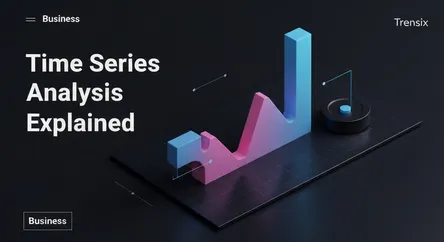Business
Time Series Analysis Explained

Discover Time Series Analysis, the statistical method for forecasting future trends by analyzing past data. Essential for business and economic planning.
What is it?
Time Series Analysis is a statistical technique used to analyze and interpret data points collected over time. This data, known as a time series, is ordered chronologically. The goal is to identify underlying patterns, trends, seasonality, and cyclical behavior. Common examples include daily stock prices, quarterly company sales figures, or monthly unemployment rates. By understanding the historical behavior of a variable, analysts can model it and make informed predictions about its future values, which is a process known as forecasting.
Why is it trending?
The rise of big data and advanced computing power has made Time Series Analysis more accessible and crucial than ever. Businesses rely on it for forecasting demand, managing inventory, and optimizing financial strategies. In economics, it's fundamental for predicting key indicators like GDP growth and inflation. The integration of machine learning algorithms has further enhanced its predictive accuracy, making it an indispensable tool for data-driven decision-making in a rapidly changing global market.
How does it affect people?
This analysis directly impacts daily life and economic stability. For businesses, accurate forecasting prevents stock shortages and helps set competitive prices. For investors, it aids in predicting stock market movements. For governments, it informs monetary policy and budget planning, which can influence interest rates and job creation. From the availability of products on shelves to national economic health, the forecasts derived from time series analysis play a significant, often unseen, role.